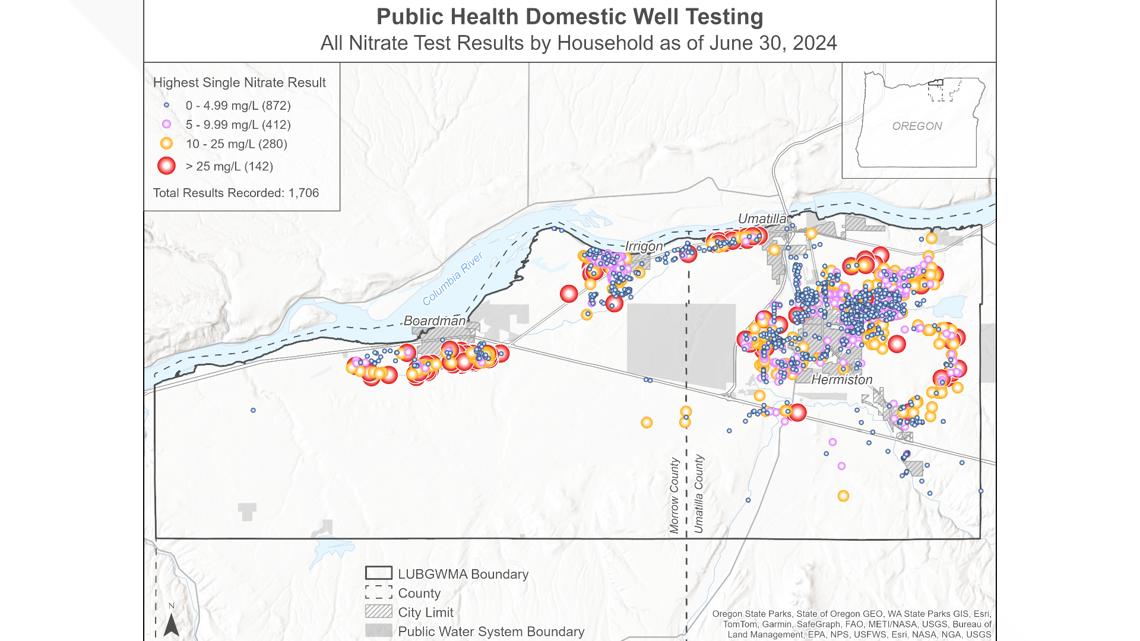BOARDMAN, Ore. — Newly released maps from the Oregon Health Authority reveal the scope of groundwater contamination in an area of the state known as the Lower Umatilla Basin, an issue that the state has known about and has done little to address for three decades.
KGW's The Story has reported extensively on the issue in its "Tainted Waters" series, documenting how agriculture and food production in the region have allowed harmful nitrates to seep into the soil, polluting underground aquifers accessed by hundreds, if not thousands, of residential wells.
While there's no long-term solution in sight, Oregon has stepped up efforts to give residents testing kits so they can determine if their wells are safe or not, providing shipments of potable water to residents if their wells test above federal action levels.
Now, the Oregon Health Authority has made available online maps that show where tested wells are located, including ones that were determined to be unsafe. Thus far, the agency said, just over 1,700 residential wells have been tested and documented in the last 15 months.
According to OHA, nitrate levels of 10 milligrams per liter or more are considered dangerous, posing the largest risk to pregnant people and infants.
Of the wells recently tested, 23% of them came in with harmful levels detected, or 385 households out of the 1,706 tested.


The new maps show that those high nitrate concentrations are particularly clustered around Boardman, west of Irrigon, west of Umatilla, and around the outskirts of Hermiston.
The state provides water deliveries to any household that tests above 10 milligrams per liter. For those that fall above 10 mg/L but below 25 mg/L, the state will fund installation and maintenance of a single in-home reverse-osmosis filtration system for the kitchen tap. But there are no in-home treatment systems certified to work for nitrate levels above 25 mg/L.
Though the problem has been apparent for decades, state and federal officials have recently stepped up efforts to address it, at least in the short-term. While they're still trying to reach households that have never gotten their wells tested, OHA is also encouraging people who previously completed a test to test again for free.

